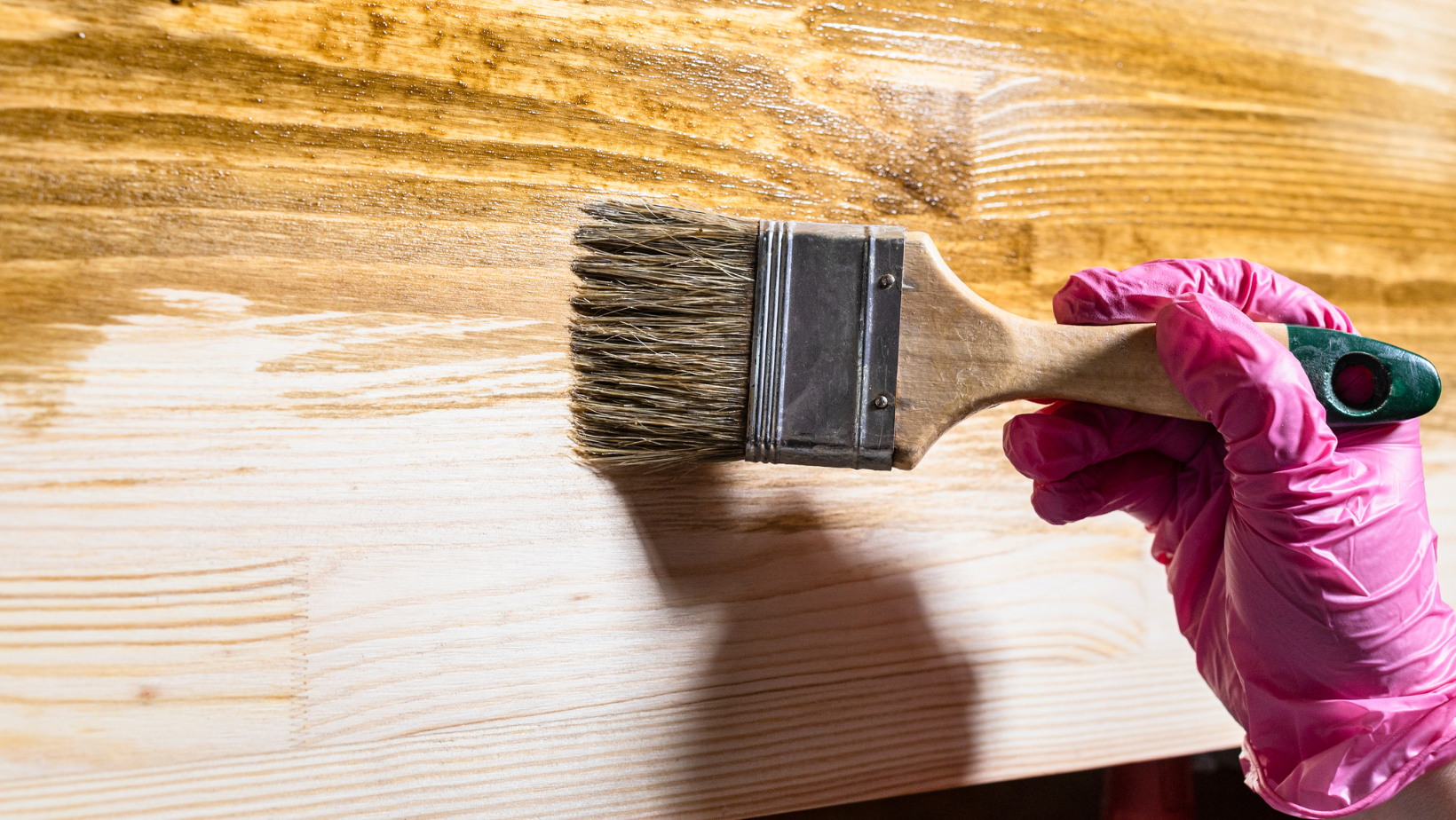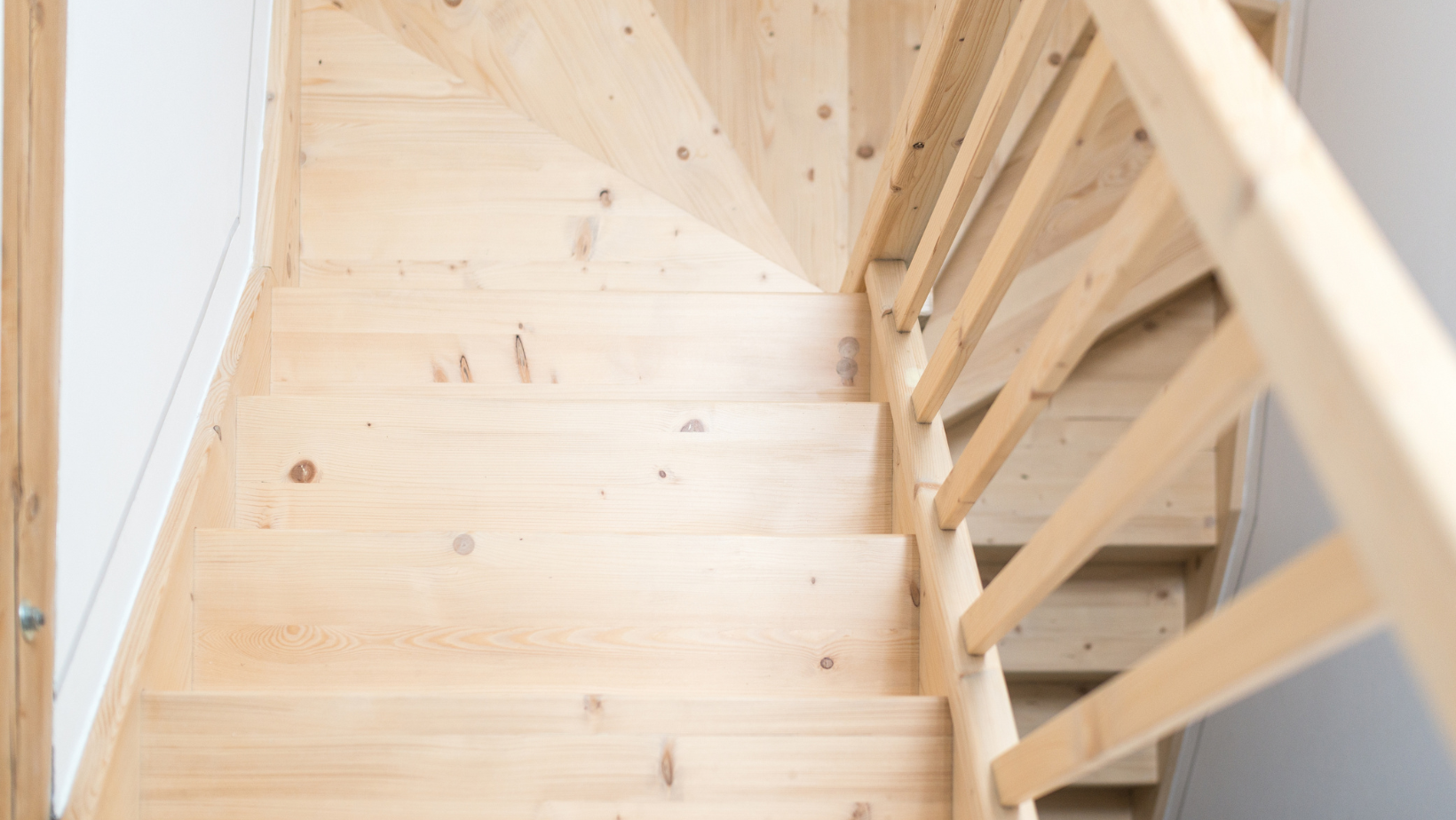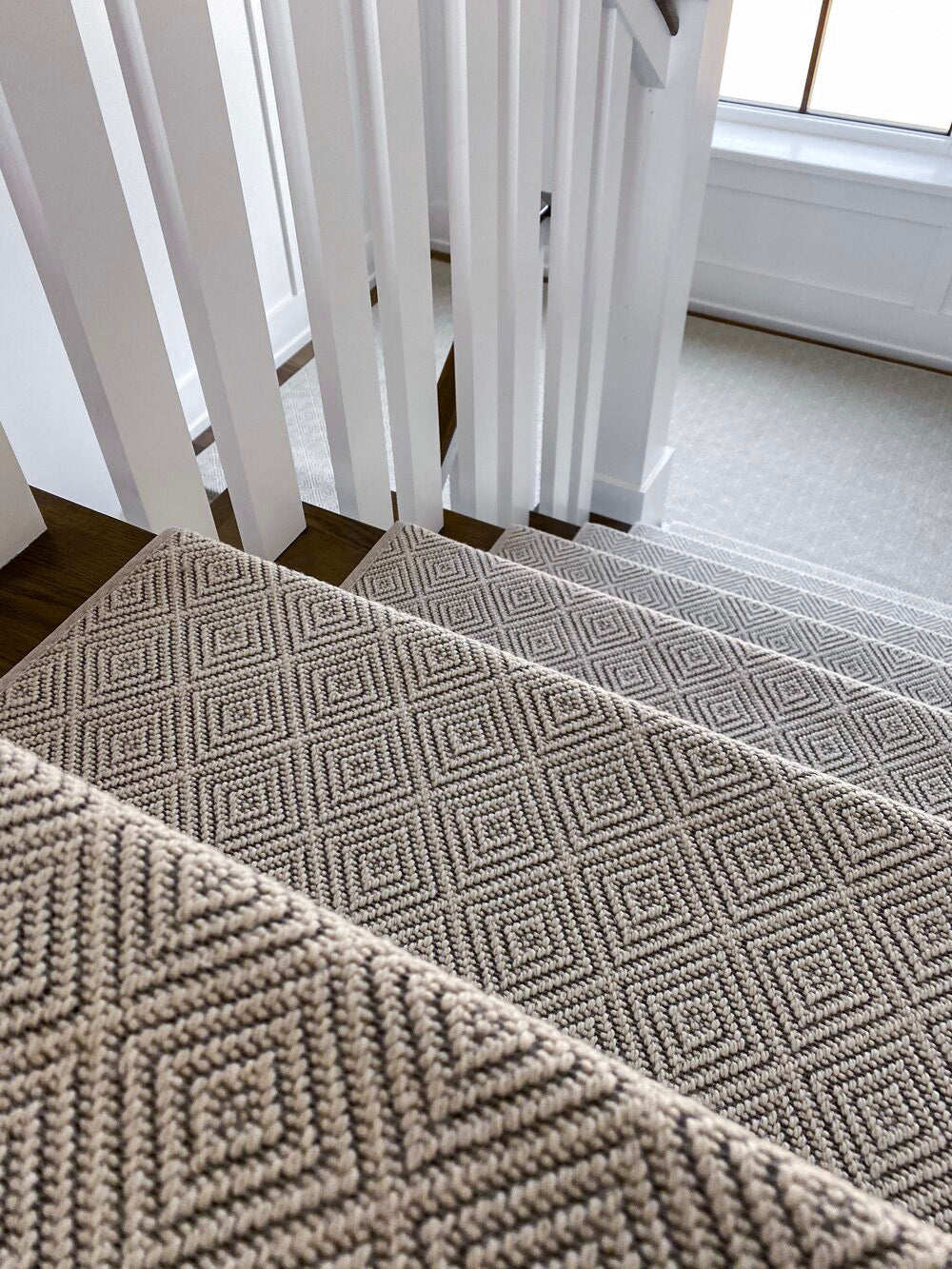Applying polyurethane protects wooden stairs and ensures a smooth surface for carpet stair treads.
To get the best results, follow these steps on how to polyurethane stair treads.
-
Clean the surface, sand it, and apply thin coats of polyurethane in the direction of the wood grain.
-
Let each coat dry fully before lightly sanding and adding another layer.
Most stair treads need two coats, but high-traffic areas may require more.
Proper drying prevents adhesion issues when installing carpet stair treads.
Why Polyurethane is Essential for Stair Treads
Many homeowners ask, do you use polyurethane on stair treads?
The answer is yes.
Applying polyurethane is a crucial step in protecting your wooden stair treads.
It enhances the natural beauty of the wood while providing a durable and long-lasting finish that withstands heavy foot traffic.
Additionally, polyurethane creates a protective barrier against scratches, scuffs, and stains, keeping your stair treads in excellent condition for years.
Without polyurethane, wood is highly susceptible to damage from moisture, dirt, and everyday wear and tear.
Over time, untreated wooden stairs can become dull, discolored, and rough, making them harder to clean and maintain.
Polyurethane not only preserves the wood but also adds a sleek, polished finish that enhances the overall aesthetic of your staircase.
Preparing Stair Treads for Polyurethane
Proper preparation ensures an even and professional-looking finish.
Skipping preparation can lead to uneven absorption, bubbles, or peeling, which affects the durability of the polyurethane coating.
Clean the Stair Treads
Start by thoroughly cleaning the stair treads to remove dust, dirt, or debris.
Use a wood cleaner or a mild soap-and-water solution.
Ensure the treads are completely dry before proceeding.
A clean surface allows the polyurethane to adhere better and prevents imperfections in the finish.
Sand the Stair Treads
Once the surface is clean and dry, sand the stair treads using fine-grit sandpaper.
This smooths imperfections and creates a slight texture for the polyurethane to adhere to.
After sanding, remove all dust using a vacuum or tack cloth.
Skipping this step can result in a rough, uneven finish, as polyurethane tends to highlight any existing flaws in the wood.
Sanding also helps open the wood grain slightly, allowing the polyurethane to penetrate more evenly.
Choosing the Right Polyurethane
For best results, select a high-quality water-based polyurethane.
It dries faster, has a lower odor, and provides a clear finish that enhances the wood’s natural appearance.
If durability is a priority, an oil-based polyurethane can be an alternative, but it requires a longer drying time.
Water-based polyurethane is popular for indoor stair treads because it maintains the wood’s natural color and doesn’t yellow over time.
Oil-based polyurethane, on the other hand, offers a slightly richer finish and superior durability, making it ideal for high-traffic staircases.
Applying Polyurethane to Stair Treads
Applying polyurethane correctly ensures a smooth and even finish.
Follow these steps to achieve a professional look:
-
Stir the polyurethane thoroughly to ensure consistency.
-
Using a high-quality brush or applicator, apply a thin coat in the direction of the wood grain.
-
Allow the first coat to dry completely according to the manufacturer’s instructions.
-
Lightly sand the surface with fine-grit sandpaper to remove any raised grain or imperfections.
-
Apply a second coat and allow it to dry fully.
Some stair treads may require additional coats, depending on the type of wood and how much polyurethane it absorbs.
Homeowners often ask, how many coats of polyurethane on wood stairs are needed?
While two coats are usually sufficient, softer woods or high-traffic areas may require three coats for maximum protection.
Tips for a Smooth and Even Polyurethane Finish
Achieving a flawless finish requires attention to detail.
Here are some expert tips:
-
Work in a well-ventilated area to ensure proper air circulation during the application process.
-
Avoid overloading the brush or applicator to prevent drips and uneven coverage.
-
Take your time and apply polyurethane carefully to achieve a professional-looking finish.
-
Allow sufficient drying time between coats to prevent cloudiness or tackiness.
Ensuring Proper Drying Before Installing Carpet Stair Treads
The drying time for polyurethane depends on several factors, including air temperature, humidity, and the number of coats applied.
Water-based polyurethane dries faster than oil-based options.
To test if the polyurethane is fully dry, lightly press a small area with your finger.
If the surface feels dry and is no longer tacky, it is ready for carpet installation.
Best Practices for Drying and Carpet Installation
-
Follow the manufacturer’s recommended drying times.
-
Ensure proper ventilation to speed up the drying process.
-
Avoid installing carpet stair treads until the polyurethane is fully cured to prevent adhesion issues.
Improper drying can lead to bubbling, peeling, or an uneven carpet installation.
Taking the time to allow the polyurethane to cure fully ensures the best long-term results.
Maintaining Polyurethane-Coated Stair Treads
Once your stair treads are finished with polyurethane, proper maintenance is essential to keep them looking their best.
Regular Cleaning
To preserve the finish, sweep or vacuum stair treads regularly to remove dust and dirt.
Use a damp microfiber cloth for spot cleaning and avoid using harsh chemicals that can degrade the polyurethane finish.
Preventing Scratches and Damage
While polyurethane adds durability, it’s still important to take precautions to prevent damage.
Consider using stair tread covers or felt pads on furniture near the stairs to reduce wear.
Avoid wearing shoes with hard soles or heels that could cause dents and scratches.
When to Reapply Polyurethane
Over time, even the best polyurethane finish will show signs of wear, especially in high-traffic areas.
If you notice dullness, minor scratches, or fading, it may be time to reapply a fresh coat of polyurethane.
Lightly sand the surface and apply one or two new coats to restore the finish.
Avoiding Bubbles and Streaks in Polyurethane Application
Bubbles and streaks are common issues when applying polyurethane, but they can be prevented with proper technique.
Understanding what causes these imperfections will help you achieve a flawless finish on your stair treads.
Causes of Bubbles in Polyurethane
Bubbles often form when the polyurethane is shaken or stirred too vigorously before application.
Using a low-quality brush or applying the polyurethane too quickly can also trap air, creating bubbles that harden as the finish dries.
To avoid this, always stir polyurethane gently and apply it in thin, even coats with a high-quality brush or foam applicator.
Preventing Streaks and Uneven Finishes
Streaks appear when polyurethane is applied inconsistently or dries too quickly.
Working in a dust-free, well-ventilated area and maintaining a steady application technique prevents this issue.
Lightly sanding between coats also smooths out any imperfections, ensuring a uniform finish.
Choosing the Best Brush or Applicator for Polyurethane
Using the right brush or applicator significantly affects the quality of your polyurethane finish.
Selecting the best tool ensures an even, streak-free application with better adhesion.
Synthetic vs. Natural Brushes
Synthetic bristle brushes work best for water-based polyurethane, while natural bristle brushes are ideal for oil-based polyurethane.
The right brush helps distribute the finish evenly and reduces brush marks.
Avoid cheap brushes, as they shed bristles and leave uneven strokes.
Foam Applicators and Rollers
Foam applicators are excellent for achieving a smooth, bubble-free finish, especially on stair treads.
Rollers can also be used but may create excess buildup, so applying polyurethane in thin layers is essential.
Choosing the right applicator ensures a professional-looking result with minimal effort.
Steps To Success
Polyurethane is an essential step in protecting and enhancing the beauty of wooden stair treads.
When applied correctly, it adds durability, prevents damage, and creates a polished, long-lasting finish.
Proper drying is also key to ensuring a successful installation of carpet stair treads.
Following the right steps in cleaning, sanding, and applying polyurethane will lead to professional-quality results.
Taking the time to do the job properly prevents common mistakes and extends the life of your stair treads.
If you're looking for stylish and functional stair treads, Oak Valley Designs offers high-quality options designed for durability and elegance.
Contact Us Today!
For premium carpet stair treads that enhance safety and style, visit Oak Valley Designs.
-
Website: https://oakvalleydesigns.com/
-
Phone: 706.331.0315
-
Email: info@oakvalleydesigns.com
-
Address: 30 River Ct SW Bldg E Cartersville, Ga 30120




